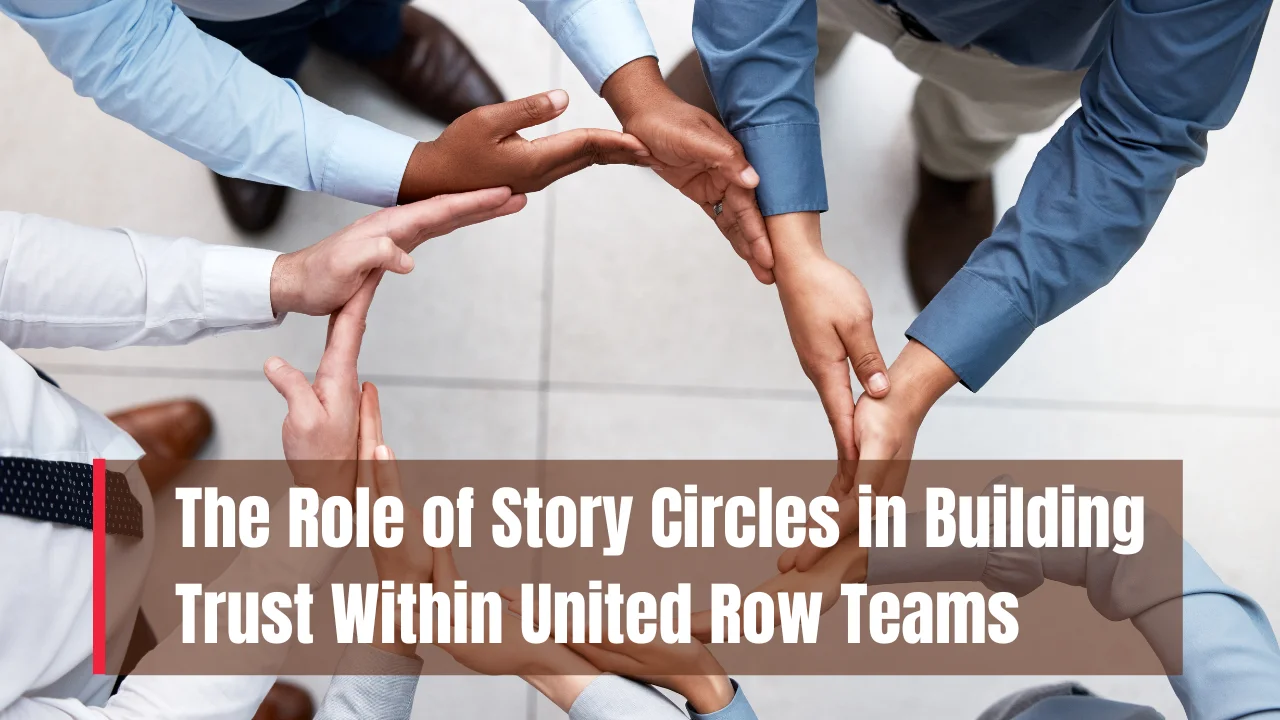Story Circles: Story Circles play a quiet but impactful role in transforming the way teams interact, especially in environments that demand unity under pressure. United Row Teams, where each movement must sync with precision and harmony, rely on trust more than any other factor. Traditional drills and physical training may strengthen the body, but it’s shared understanding that strengthens the heart of the team. And that’s where Story Circles begin to matter.
This article takes a deeper look into how Story Circles help foster trust within United Row Teams. It breaks down their purpose, how they support emotional connection, improve communication in sports settings, and how any team can start using them. You’ll get a clear picture of how this simple practice shapes high-performing crews by nurturing psychological safety, trust-building, and true unity.
Story Circles: A Powerful Tool for Trust-Building and Unity
Story Circles are more than just a space for talking — they are an intentional practice of listening, understanding, and connecting through personal narratives. When members of a rowing team gather and take turns sharing meaningful experiences, they begin to dissolve emotional walls. This not only strengthens the emotional connection among team members but also lays a stable foundation for effective teamwork. The unfiltered stories, shared in a space free of judgment or correction, help team members appreciate each other beyond their roles in the boat. In turn, this creates a ripple effect of trust, patience, and deeper commitment, all essential ingredients for achieving synchronized performance in rowing.
Overview Table: Glance at the Role of Story Circles in Row Teams
| Aspect | Key Insight |
| Trust Building | Helps rowers open up and connect on a human level |
| Team Bonding | Strengthens personal and emotional ties |
| Communication in Sports | Improves clarity, empathy, and openness |
| Conflict Resolution | Minimizes tensions through understanding |
| Emotional Connection | Creates deeper awareness of teammates’ experiences |
| Athletic Performance | Enhances motivation and focus through unity |
| Team Development | Encourages personal growth and leadership |
| Rowing Teamwork | Fosters synchronicity and smoother collaboration |
What Are Story Circles?
Story Circles are intentional group dialogues where each participant shares a personal story, usually guided by a theme or prompt. These are not debates or discussions. No one interrupts. No one critiques. Each person speaks freely while the others listen fully. This dynamic allows people to feel safe, validated, and seen.
In the context of United Row Teams, the impact is deeply emotional. Rowing is not just a physical sport — it’s about harmony, timing, and trust. When teammates understand what drives each other, what they’ve overcome, or what they hope for, that knowledge translates into loyalty and cohesion in the boat. Story Circles allow those invisible bonds to be formed and strengthened in natural, human ways.
Why Trust Matters in United Row Teams
Trust is the silent rhythm beneath every stroke. In rowing, the success of the team relies on total cooperation. Each athlete must believe that their teammates will pull their weight, remain focused, and respond with instinctive precision. Without trust, this chain breaks.
Through Story Circles, teams develop emotional safety, where vulnerability is not punished but respected. When a teammate speaks about a personal struggle or shares a moment of triumph, others listen not just with ears but with empathy. That shared space of honesty builds the type of trust that formal training can’t create. It leads to stronger resilience during races, better conflict resolution, and overall smoother rowing teamwork.
How Story Circles Improve Team Communication
Communication in sports is not only about verbal commands; it’s also about understanding silence, energy, and presence. Story Circles sharpen this kind of deep communication. When teammates listen to each other’s life stories, they begin to understand individual temperaments, stress responses, and motivations.
This awareness helps rowers anticipate how a teammate might react under pressure or how best to support them. It reduces friction caused by miscommunication, builds patience, and promotes a healthier team culture. Ultimately, the boat moves not just with muscles, but with minds in sync.
Emotional Safety and Team Bonding
In any high-performance team, emotional safety is critical. When people feel emotionally safe, they contribute more, take healthy risks, and support each other without fear of being judged. Story Circles create that safety by opening space for unfiltered sharing.
In United Row Teams, this is a game changer. Emotional safety means rowers feel free to admit when they’re struggling, ask for help, or speak up without hesitation. Over time, this cultivates genuine team bonding. Teammates shift from being co-athletes to being allies who care about each other beyond the race.
Simple Steps to Start a Story Circle
Creating a Story Circle doesn’t require professional facilitation. Here’s a quick guide to start your own within a team:
- Choose a quiet and relaxed setting where everyone can sit in a circle.
- Set ground rules: respect, no interruptions, and no judgment.
- Pick a meaningful prompt, such as “a time I faced a challenge” or “why I started rowing.”
- Go around the circle, allowing each member a few minutes to speak.
- No one responds or offers advice during the sharing.
- Close with a reflection, where participants can express how the session impacted them.
Doing this regularly builds consistency and keeps the emotional connections strong throughout the season.
Key Benefits of Story Circles for Rowing Teams
- Stronger Team Unity: When rowers feel heard, they work together more naturally.
- Better Conflict Resolution: Misunderstandings are less likely and easier to resolve.
Tips for Making Story Circles Work
To make Story Circles sustainable and meaningful:
- Be consistent. Hold them weekly or before important events.
- Keep the environment comfortable and inclusive.
- Don’t force participation. Let trust grow naturally.
- Respect privacy. What’s shared in the circle stays in the circle.
- Rotate facilitators to promote shared leadership.
When done with care, Story Circles become a ritual that teams look forward to, not just as an emotional release, but as a vital part of their development.
Real-Life Examples from United Row Teams
Several United Row Teams have embraced Story Circles and reported remarkable shifts in team chemistry. One team started the practice during winter training, using it as a way to reconnect after off-season breaks. Members shared stories of personal loss, achievement, and perseverance. The result? A deeper mutual respect and motivation that translated directly into improved athletic performance.
Another team introduced Story Circles before competitions. Instead of hyping themselves up with external pressure, they shared internal reflections, fears, and hopes. This grounded them emotionally and strengthened their mental resilience under competitive stress.
Final Thoughts
At the heart of every great team is trust — and Story Circles are one of the most effective ways to build it. They offer space for open communication, vulnerability, and human connection, which are often missing in competitive sports. For United Row Teams, where performance depends on unity, that trust is not a luxury — it’s a necessity.
If you’re part of a rowing team or any high-functioning group, consider starting your own Story Circle. It may feel unfamiliar at first, but the rewards are long-lasting: stronger bonds, improved communication, and a deeper sense of team identity. The boat doesn’t just row better — it breathes together.
FAQs
It is a group session where team members share personal stories to build trust and improve connection.
They build emotional safety, which enhances coordination, communication, and overall team unity.
No, any trusted team member can facilitate as long as the space remains respectful and non-judgmental.
Once a week or before major events is ideal to maintain strong connections.
While they may not directly solve issues, they reduce tension and help prevent future conflicts through better understanding.












